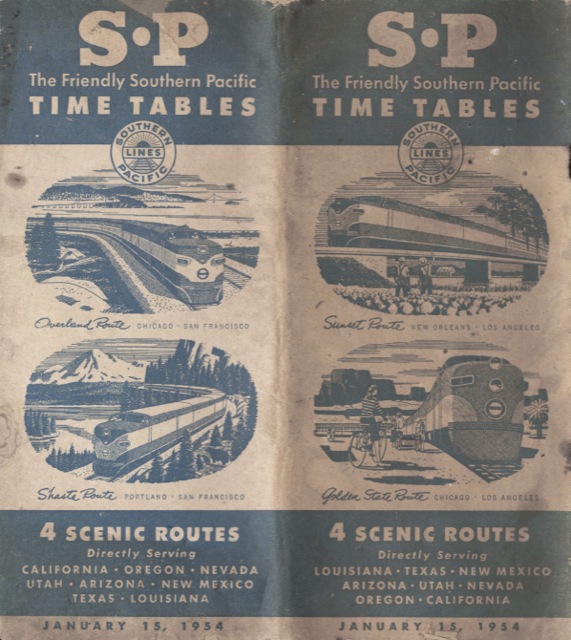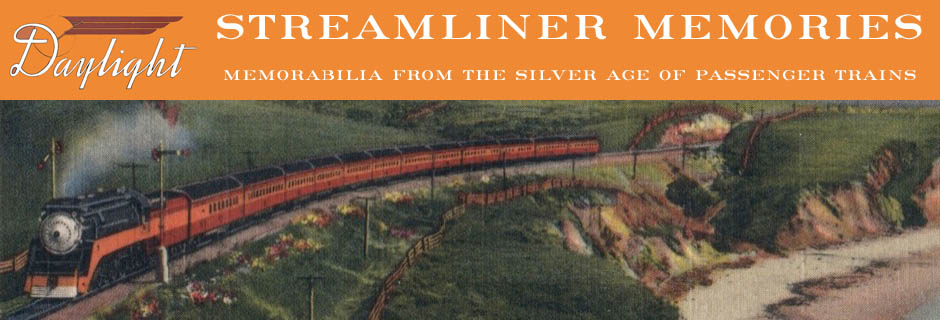Southern Pacific operated a lot of passenger trains in the 1950s. Most of the changes from the 1936 timetable to this one from 1954 have to do with streamlining of former heavyweight trains.

Click image to download a 31.4-MB PDF of this 48-page timetable.
The Sunset Route in 1954 was still served by the Sunset Limited and Argonaut. In addition, passengers between Houston and New Orleans could choose to take the overnight Acadian. Travelers between Houston and Dallas could choose from the streamlined Sunbeam, streamlined Hustler, or the heavyweight, overnight Owl.
The Golden State Route was served by the Golden State, a train called the Imperial which split at Tucumcari with part going to Chicago and part to Memphis, and unnamed trains 43 and 44 (previously called the Californian), which apparently only went as far as Tucumcari and did not connect with a Rock Island train.
The Cascade line on the Shasta Route had the Shasta Daylight and streamlined, overnight Cascade plus the heavyweight Klamath, a local that took 6-1/2 hours longer to get from Portland to San Francisco than the streamlined trains. The Siskiyou line still had a train to Ashland called the Rogue River, but travel on the windy route south of Ashland was via Pacific Greyhound.
The Coast line had the Coast Daylight, all-Pullman, overnight Lark, and all-coach, overnight Starlight. All three trains were advertised as being streamlined.
The San Joaquin line was served by four daily trains. The San Joaquin Daylight split at Modesto, with part going to San Francisco and the rest–now called the Sacramento Daylight–going to Sacramento. An overnight train called the Owl (not to be confused with the Houston-Dallas Owl) connected Los Angeles with San Francisco while another overnight train between L.A. and Sacramento was called the West Coast. A fourth, unnamed train was a local, taking 20 hours to do the same journey that the San Joaquin Daylight did in twelve.
SP had seven daily trains between San Francisco and Sacramento in 1954, down from twelve in 1936. Service between San Francisco and San Jose had been cut only slightly from 27 weekday trains in 1936 to 23 in 1954. Pacific Electric had been replaced by Metropolitan Coach Lines as a part of what some call the Great Streetcar Conspiracy but what in fact was only simple economics: buses could go more places and cost less to operate than rail cars and didn’t require maintenance of rails and power facilities.
Northwestern Pacific still had one daily passenger train (down from two in 1936) from Eureka to San Rafael. Passengers going south of San Rafael would connect with Pacific Greyhound.
Finally, the Pacific Railroad of Mexico offered a daily train from Nogales, Mexico to Guadalajara. Going an average speed of 23 mph, the train was non-air-conditioned coach only; passengers wanting to eat on the 48-hour trip would have to bring food aboard or buy at stations or from food carts along the way. SP no longer offered train service from Tucson to Nogales, so passengers would have to take a bus to Nogales, Arizona and then walk across the international border.
